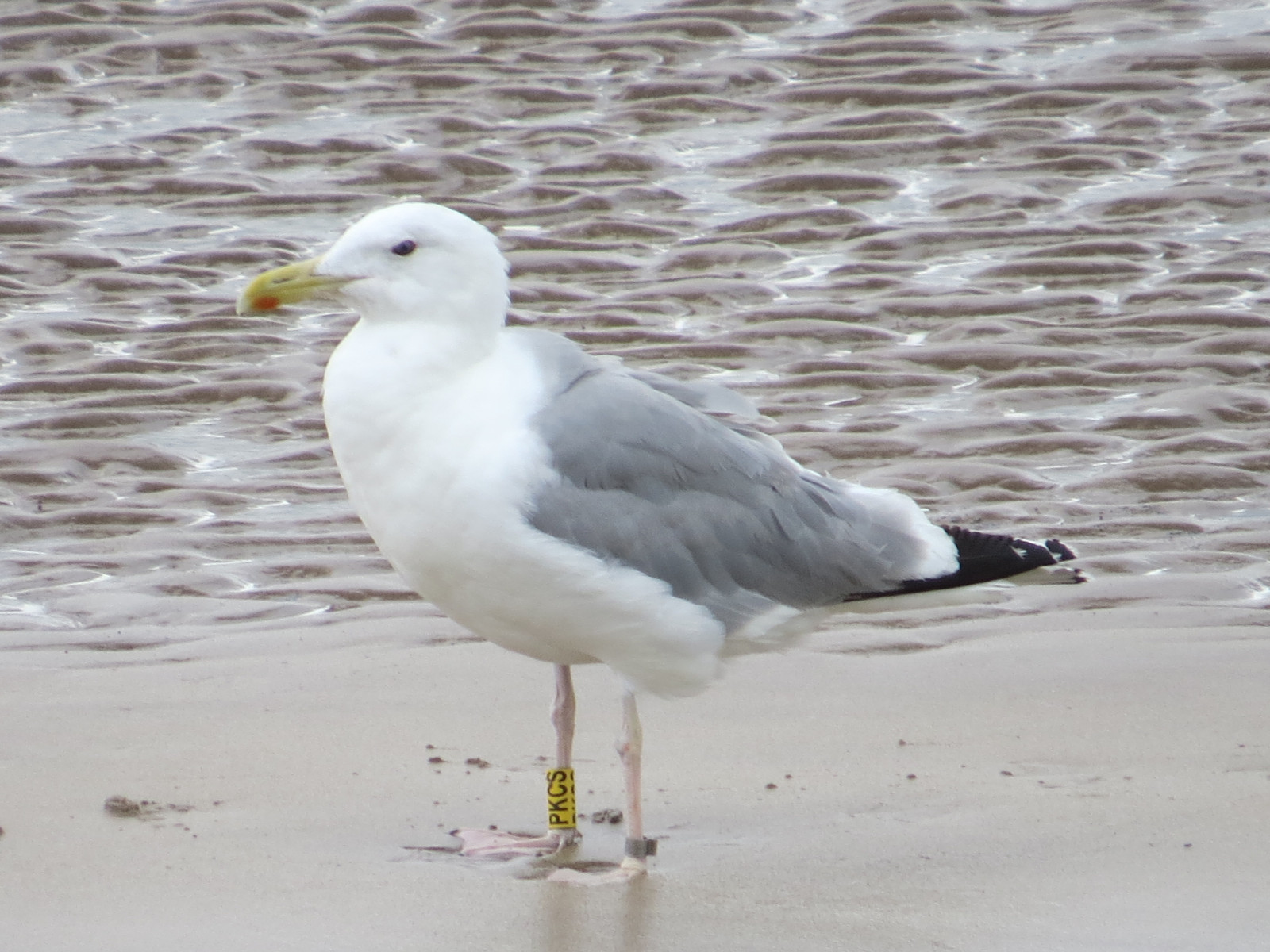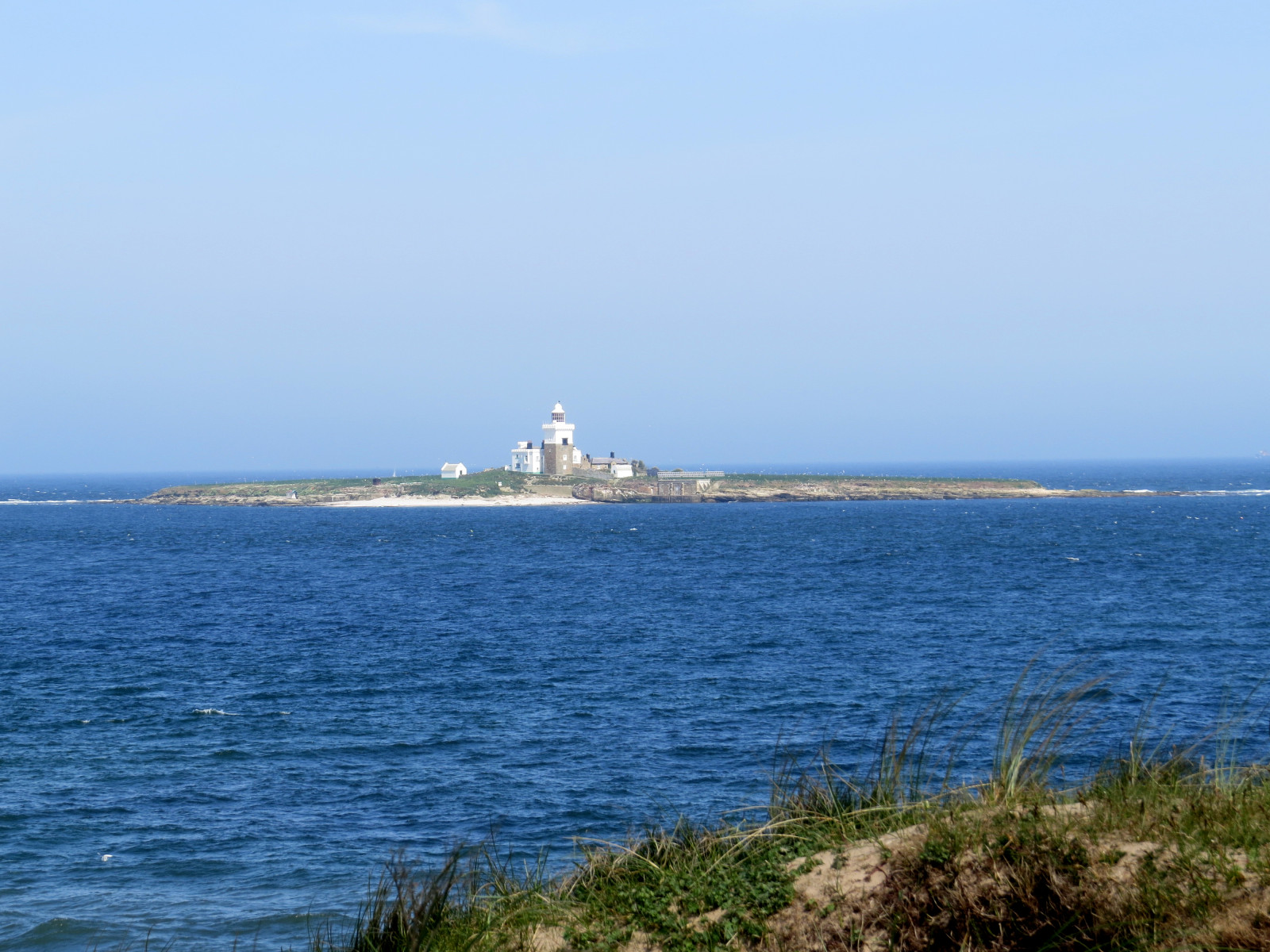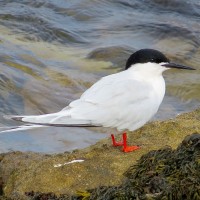Opis
Amble and the Coquet Estuary has sand and mud flats that attract resident, passage and wintering waders, gulls, and wildfowl. Passage migrants, including passerines, are regular. Coquet Island is the main UK breeding site for rybitwa różowa, and also supports breeding rybitwa czubata, rybitwa popielata, edredon, and maskonur. There are several car parks in Amble village (the fish quay is a good starting point) and lay-bys on the A1068 as it follows the River Coquet between Amble and Warkworth.
łabędź krzykliwy are often in the fields around the River Coquet, while the upper tidal part of the river has regular czapla nadobna and wintering nurogęś, szlachar, and gągoł. The mudflats have good numbers of waders, including biegus rdzawy, biegus zmienny, biegus krzywodzioby, kulik mniejszy, and krwawodziób. A colour-ringed mewa białogłowa, with yellow 'PKCS' ring, has been present in late summer for several years. Offshore, between the river mouth and Coquet Island, markaczka, nur rdzawoszyi, and lodowiec can be present. Rarer visitors have included alczyk, podróżniczek, jerzyk blady and górniczek (in dunes to north).
Szczegóły
Dostęp
Two car parks central in Amble, another off A1068 near the yacht club. Click on a P in the map for directions. Amble is in the England Coastal Footpath and N1 Cycle route. Bus services X18 and X20 operate between Newcastle and Alnwick, both passing through Amble and calling at Alnmouth rail station (8km north).
Teren i siedlisko
Rzadkie drzewa i krzewy , Łąka , Rzeka , Morze , Wydmy , Plaża , Równina , Błota , Rolnictwo/uprawy , Miasto/wieśWarunki
Płaski , Piaszczysty , Suchy , Otwarty krajobraz , Możliwy wysoki poziom wodyTrasa dookoła
TakCzy luneta będzie przydatna ?
Może być przydatnaUdany sezon obserwacyjny
Przez cały rokNajlepszy czas na wizytę
Wiosna , Jesień , Lato , Wiosenne migracje , Jesienne migracjeTrasa
Droga utwardzona , Droga nieutwardzona , Szeroka ścieżkaPoziom trudności szlaku pieszego
ŁatwyDostępne
Pieszo , Rower , Samochód , Łódź , Wózek inwalidzkiCzatownia/platforma obserwacyjna
NieDodatkowe informacje
Coquet Island is operated as a bird reserve by the RSPB and landing is prohibited. Boat trips around the island operate from Amble harbour and are recommended during the breeding season. See the link below.
Note that the harbour breakwater paths are dangerous during east winds, with large waves breaking over them; do not attempt to walk on these in rough weather!





